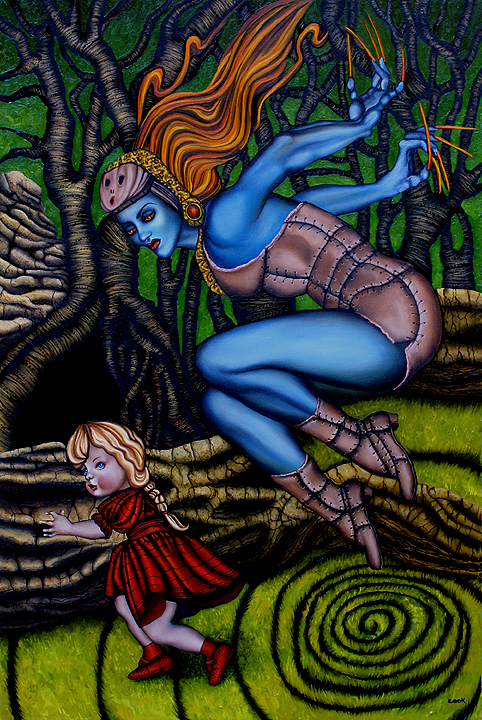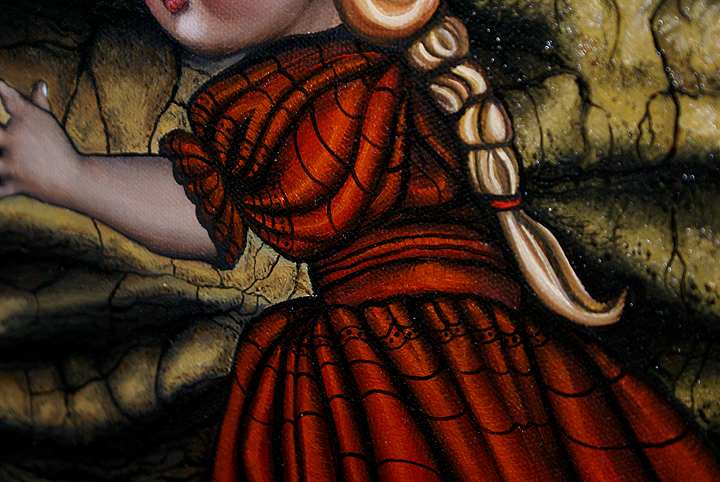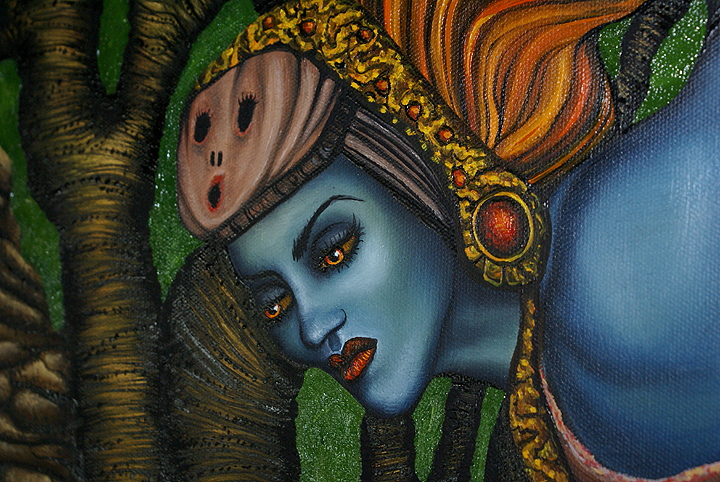 |
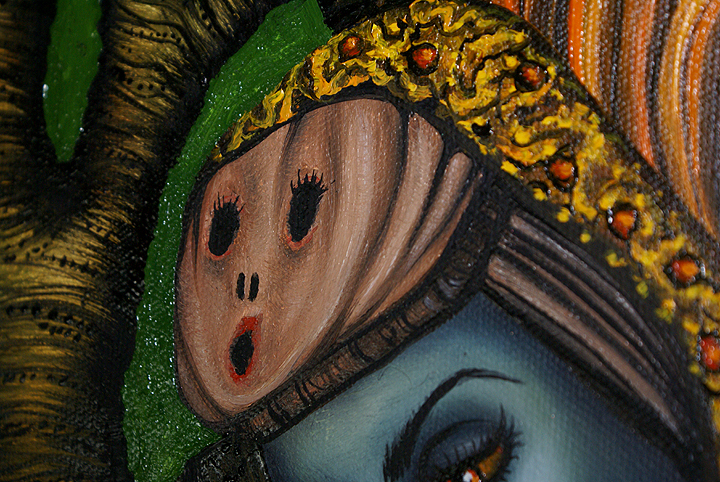 |
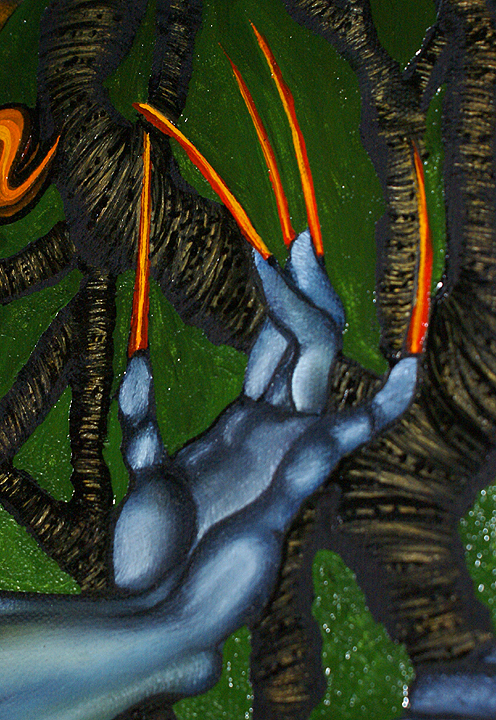 |
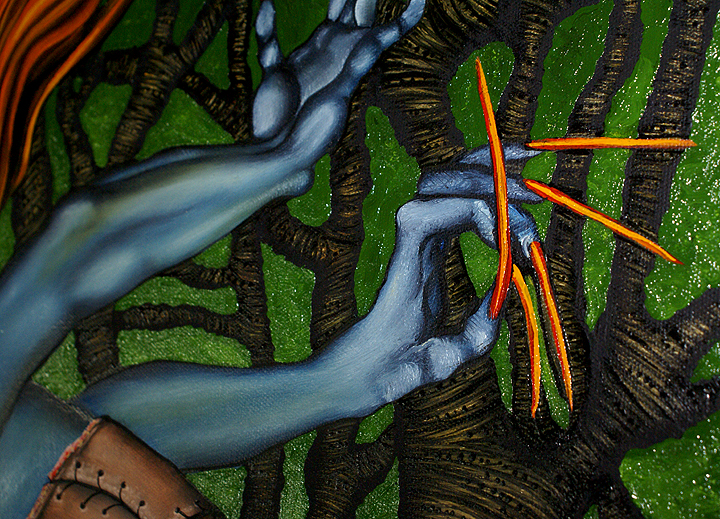 |
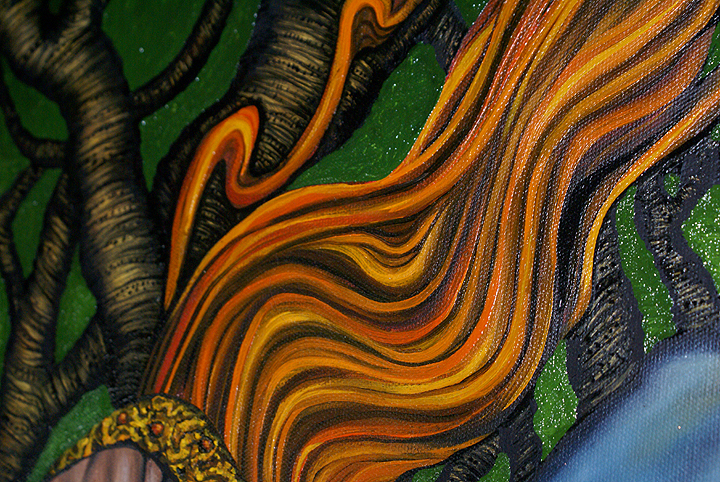 |
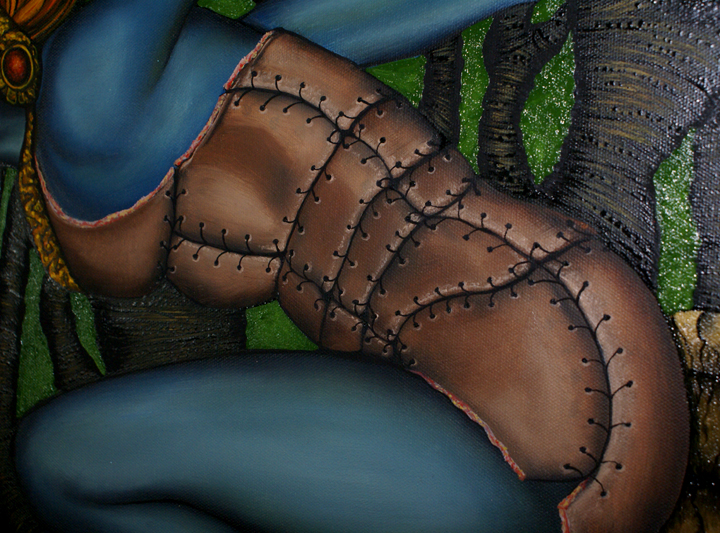 |
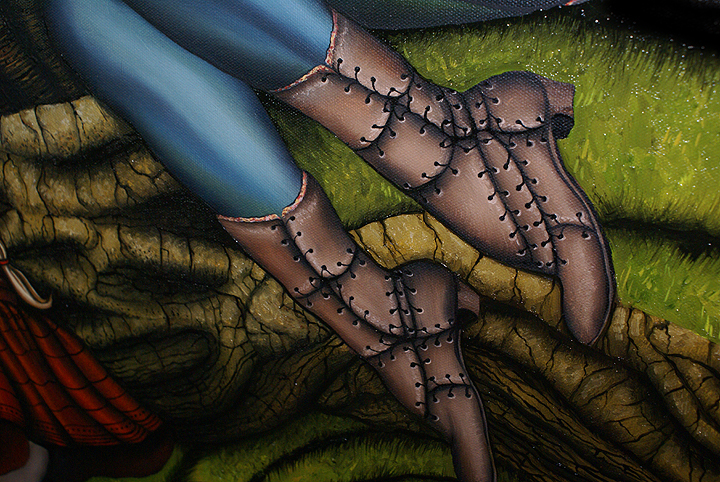 |
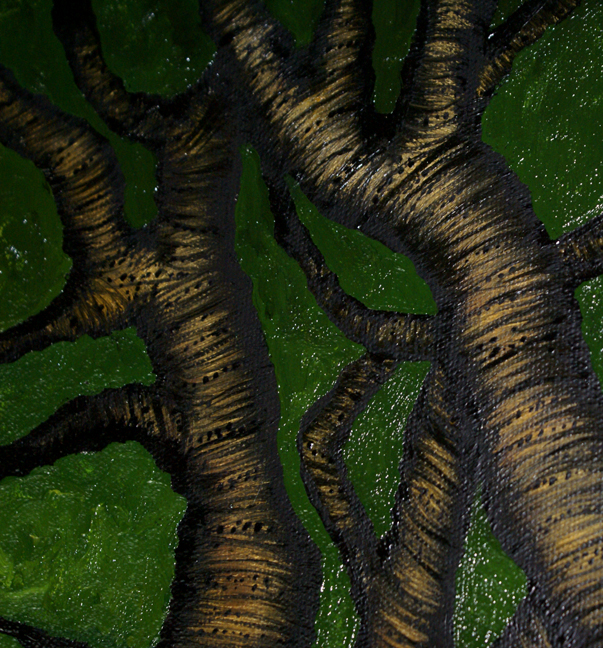 |
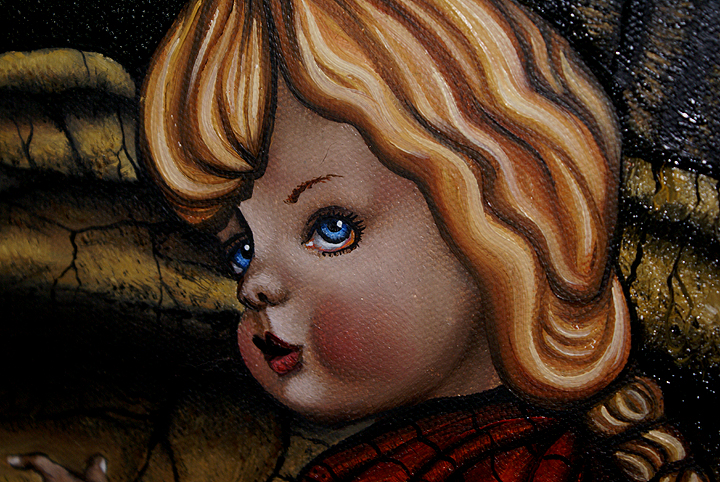 |
|
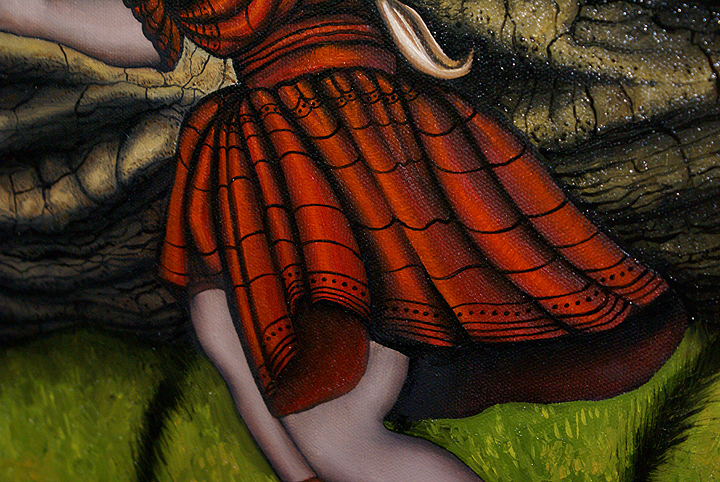 |
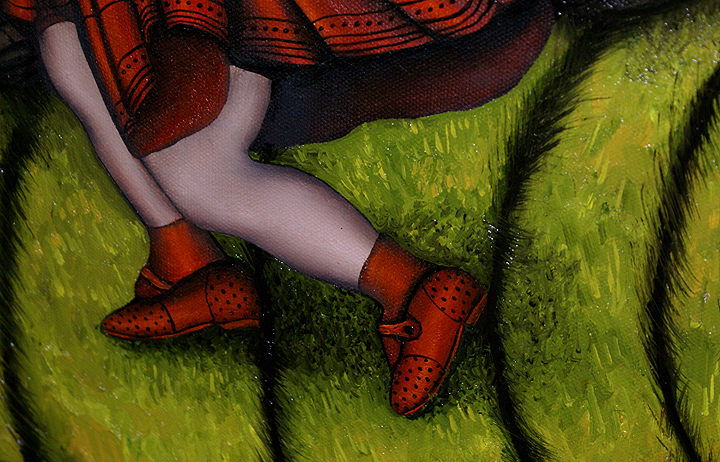 |
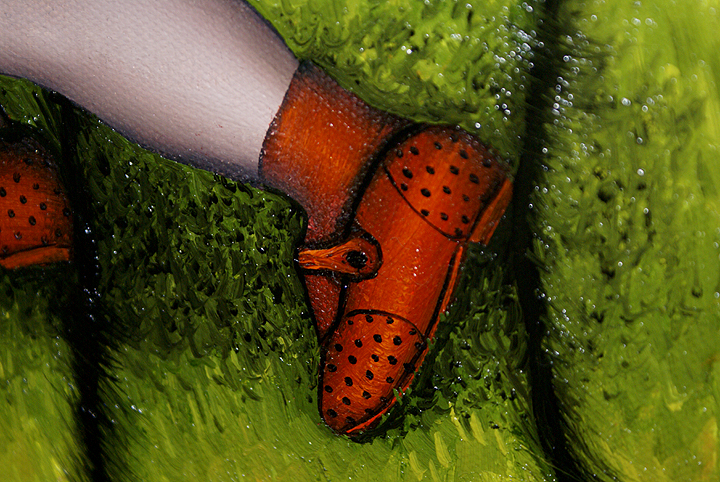 |
 |
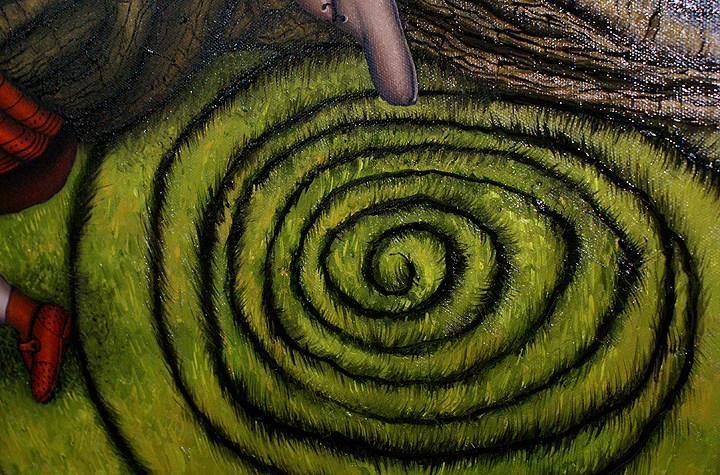 |
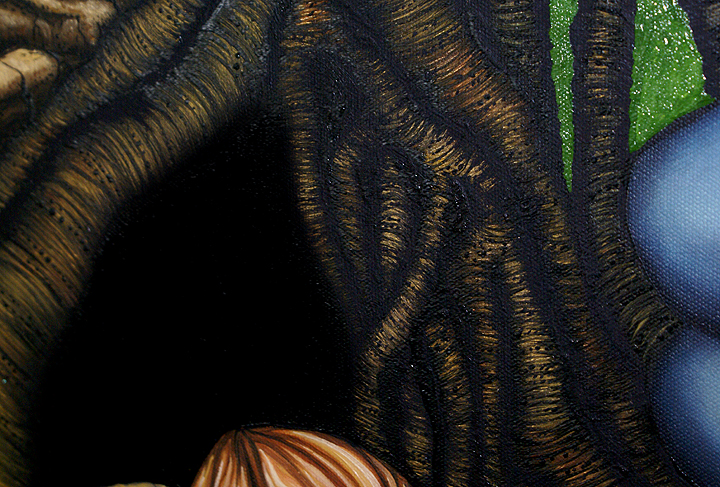 |
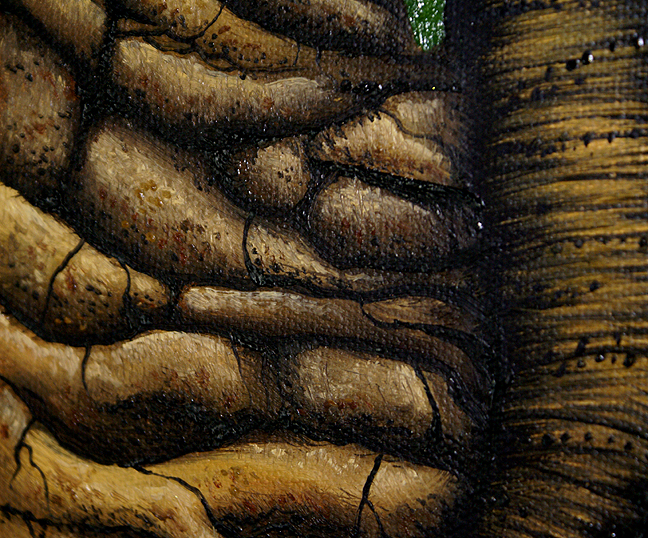 |
"Wicked Women of Mythology Series" Black Annis oil on canvas 24" x 36" |
Black Annis - Black Annis, also known as Black Agnes, is a bogeyman figure in English folklore. She is imagined as a blue-faced crone or witch with iron claws and a taste for human (especially child) flesh. She is said to haunt the countryside of Leicestershire, living in a cave in the Dane Hills, with an oak tree at its entrance. She supposedly goes out onto the glens at night looking for unsuspecting children and lambs to eat, then tanning their skins by hanging them on a tree, before wearing them around her waist. She would reach inside houses to snatch people. Legend has it that she used her iron claws to dig into the side of a sandstone cliff, making herself a home there which is known as Black Annis's Bower. The legend led to parents warning their children that Black Annis would catch them if they did not behave. Origins: It is thought that the earliest written reference to Black Annis was from the eighteenth century, from which a title deed referred to a parcel of land as "Black Anny's Bower Close". Ronald Hutton, in his book The Triumph of the Moon: A History of Modern Pagan Witchcraft, suggests that the Black Annis of Leicestershire legend was based on a real person, Agnes Scott, a late medieval anchoress (or by some accounts a Dominican nun who cared for a local leper colony), born in Little Antrum, who lived a life of prayer in the cave in the Dane Hills, and was buried in the church yard in Swithland. Hutton suggests that the memory of Scott was distorted into the image of Black Annis, either to frighten local children, or due to the anti-anchorite sentiment that arose from the Protestant Reformation In Victorian times, the story of Agnes Scott, or Annis, became confused with the similarly-named goddess Anu. T.C. Lethbridge made this connection and went on to claim that Annis was the personification of the Great Goddess in crone form, leading to interest from Wiccan groups. While Agnes Scott may have been the inspiration for the local legend, the Black Annis figure has several possible origins. Some have claimed, as Lethbridge did, that the origin can be found in Celtic mythology, based on Danu (or Anu), wife of the Celtic God Llud, or it may derive from Germanic mythology. It has been suggested that the legend may derive from a popular memory of sacrifice to an ancient goddess. Black Annis has also been identified as being the same as the Gaelic legend Yellow Muilearteach, with the wearing of the victims' skins a local addition to the myth. Others have identified her with the Celtic legend of Cailleach Bheare. The origin of the legend may go back to the mother-goddess of ancient Europe, who was remembered as a devourer of children. It is thought that offerings of children may have been made to the goddess that inspired the legend in the archaeological Hunting Period, the oak tree at the cave's entrance also a common site of local meetings. Annis was also represented in cat form and the legend led to a local ritual in early spring, when a dead cat would be dragged before a pack of hounds in front of her bower, to celebrate the end of winter. |
